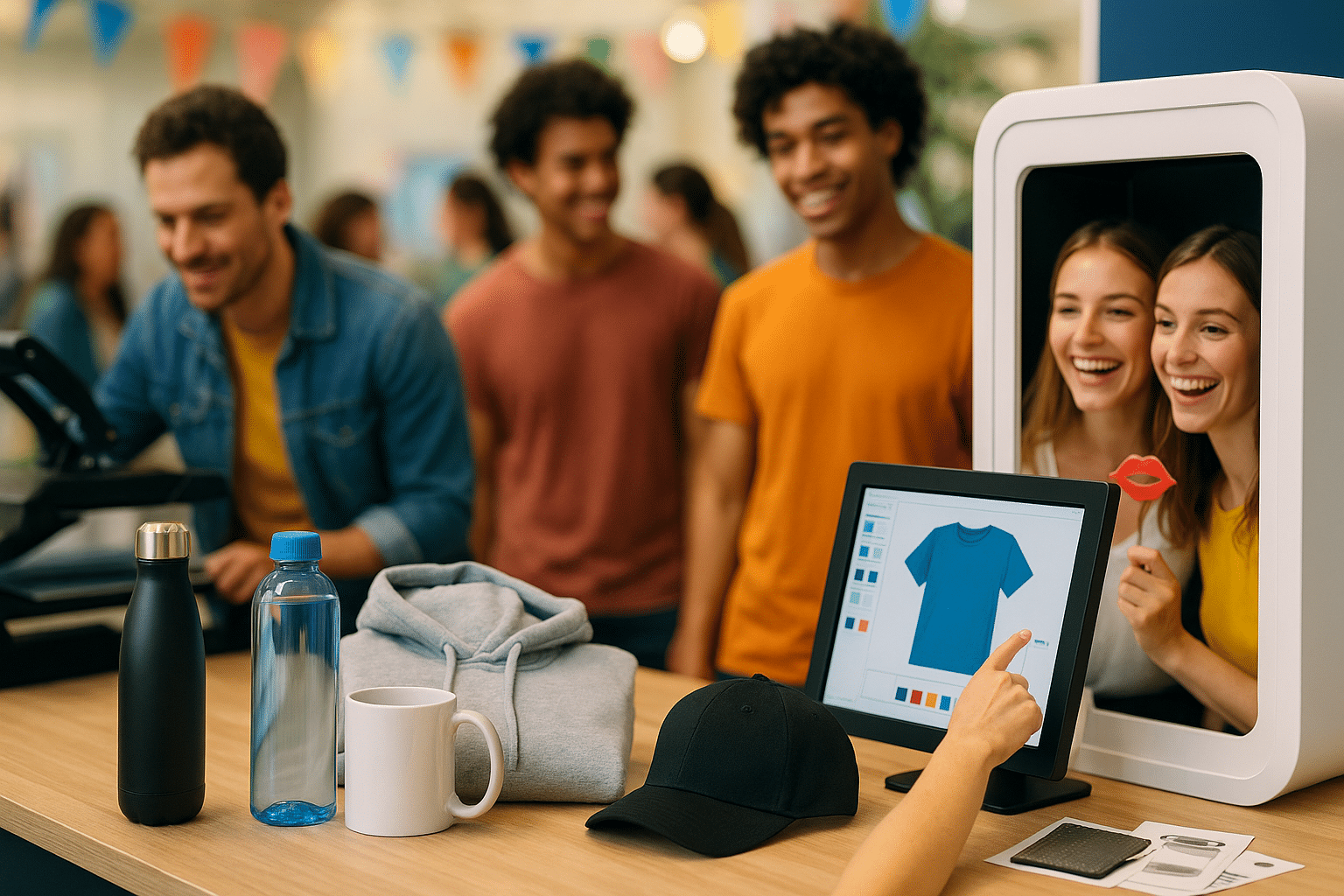Mastering the Art of Event Planning with Interactive Trends
Mastering the Art of Event Planning with Interactive Trends

Event planning has evolved into a multifaceted discipline that merges creativity with strategy. This article dives into essential tips, innovative trends, and interactive DIY inspirations to help you create memorable events. Discover how branding, behind-the-scenes insights, and diverse items like thermal bottles and photo booths can elevate your event planning experience.
The Evolution of Event Planning
As the landscape of event planning continues to evolve, it’s essential to understand the significant milestones that have shaped this dynamic industry. The journey of event planning has transitioned from a straightforward task of organizing gatherings to a profound experience that weaves together creativity, technology, and audience engagement. This evolution reflects how the industry adapts to changing demands and the importance of meeting the expectations of diverse audiences.
Event planning traditionally relied heavily on fundamental aspects such as venue selection, guest lists, logistics, and catering. These classic elements remain crucial, yet today’s planner must also embrace technology and interactive trends to captivate guests. The growth of the digital age has introduced new tools and resources that help streamline planning processes, enabling event organizers to focus more on creating memorable experiences. For example, planners now have access to specialized software for managing RSVPs and budgets, along with platforms that allow seamless communication with vendors and clients.
As we delve deeper into the evolution of event planning, we notice a marked shift toward understanding target audiences. Gone are the days when planners could simply host an event and expect attendees to enjoy it. Now, we emphasize the importance of analytics and insights to devise event concepts that resonate with specific demographics. Understanding your audience’s preferences allows planners to craft personalized experiences that foster deeper connections, leading to higher levels of satisfaction and engagement.
The incorporation of **interactive elements** has played a pivotal role in shaping modern events. Attendees today crave involvement; they want to engage, interact, and contribute to the overall atmosphere. Themed engagement activities, for instance, can transform a mundane gathering into a vibrant, memorable experience. One popular trend is the introduction of interactive installations, such as live art demonstrations or collaborative art projects that invite guest participation—these not only serve as entertainment but also form lasting memories and connections among attendees.
Another exciting prospect in the realm of event planning is the rise of the **photo booth**. Offering a blend of fun and nostalgia, photo booths are now considered a staple at a wide range of events, from weddings to corporate gatherings. The decision to hire a photo booth can be a game-changer, transforming an ordinary event into one where guests can create and capture spontaneous memories. When pondering the photo booth cost, it’s essential to weigh its value against the enhanced engagement and social interaction it fosters. Beyond just a fun activity, photo booths provide branded photo prints, enhancing marketing and branding efforts by serving as memorable takeaways for guests.
In addition to traditional photo booths, planners can explore bespoke options such as customizable backdrops or themed props, tailored to fit the event’s overall aesthetic. For those looking to buy a photo booth, various styles are available in the market, offering unique features—from open-air designs that accommodate large groups to enclosed booths for intimate snapshots. By integrating modern technology, some photo booths even offer instant social media sharing, allowing guests to post their interactions in real time, further amplifying the event’s reach beyond the venue.
As planners embrace this shift toward more interactive experiences, the need for creativity becomes paramount. Traditional formats are being challenged by innovative ideas that captivate and hold the attention of attendees. For instance, incorporating creative activities into event schedules, such as DIY workshops, allows guests to dive hands-on into the experience. Think about offering personalized thermal bottles or luggage tags designed during the event. These items not only serve practical functions but also double as cherished mementos that reflect the attendee’s unique involvement.
Moreover, the demand for branded items has surged, emphasizing the importance of fostering a recognizable identity throughout an event. Branded merchandise such as mugs, caps, and hoodies can serve as effective marketing tools, generating goodwill while reinforcing the event’s narrative. When guests walk away with a personalized item that they can use daily, it keeps the event alive in their memory long after it concludes.
Behind-the-scenes insights have also become more available, allowing for a deeper understanding of the planning process. Planners are no longer isolated entities but are part of a vast network of collaboration and innovation. Engaging not just with vendors but also with participants can lead to successful brainstorming sessions, providing fresh perspectives that can elevate event quality. These collaborations foster a community environment, where creative ideas flourish and push the boundaries of what’s considered possible.
Event success stories are now shared more readily through social media channels, acting as both case studies and inspiration for fellow planners. The storytelling aspect offers a glimpse into the intricacies of organizing large-scale events, highlighting the dedication and creativity that underpin each gathering. Attendees are often encouraged to share their experiences online, creating a buzz that extends the reach of the event and fosters future interest. By spotlighting unique aspects of your event, such as the interactive components or the personalized items offered, you can effectively create a narrative that resonates with potential attendees.
In conclusion, the art of event planning has evolved significantly over the years, driven by a fusion of technology, creativity, and an increased understanding of audience dynamics. Planners today face the exciting challenge of merging classic logistics with modern engagement techniques while capitalizing on emerging trends like DIY activities and interactive booths. By focusing on the elements that engage and inspire, event professionals can create unforgettable experiences that keep guests talking long after the event has ended.
Conclusions
In summary, successful event planning combines strategic marketing, interactive trends, and thoughtful DIY inspirations. By utilizing diverse items and engaging tools like photo booths, you can create distinctive experiences that resonate with your audience. Embrace these insights to elevate your upcoming events and leave a lasting impression.




